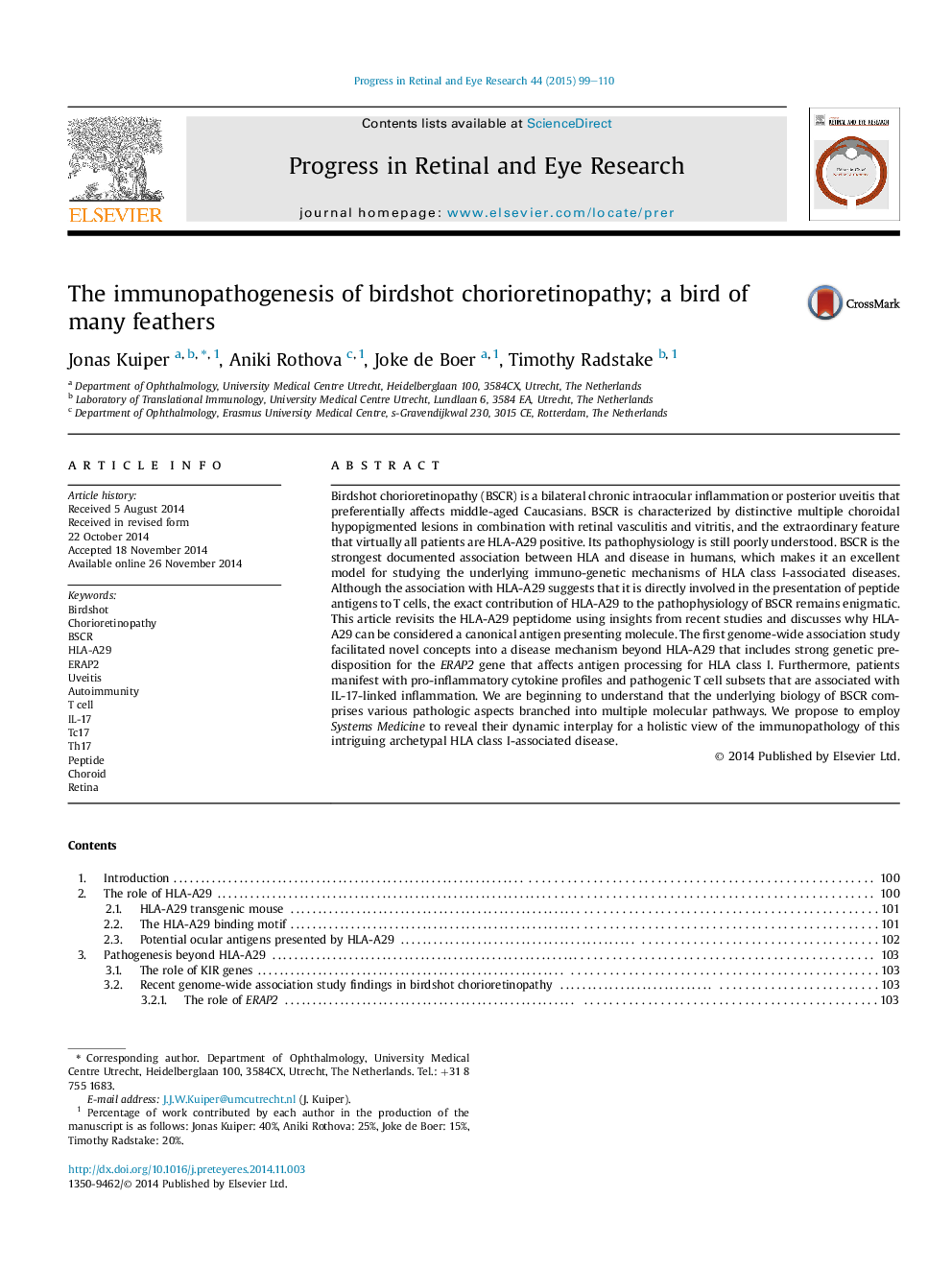| Article ID | Journal | Published Year | Pages | File Type |
|---|---|---|---|---|
| 4031912 | Progress in Retinal and Eye Research | 2015 | 12 Pages |
Birdshot chorioretinopathy (BSCR) is a bilateral chronic intraocular inflammation or posterior uveitis that preferentially affects middle-aged Caucasians. BSCR is characterized by distinctive multiple choroidal hypopigmented lesions in combination with retinal vasculitis and vitritis, and the extraordinary feature that virtually all patients are HLA-A29 positive. Its pathophysiology is still poorly understood. BSCR is the strongest documented association between HLA and disease in humans, which makes it an excellent model for studying the underlying immuno-genetic mechanisms of HLA class I-associated diseases. Although the association with HLA-A29 suggests that it is directly involved in the presentation of peptide antigens to T cells, the exact contribution of HLA-A29 to the pathophysiology of BSCR remains enigmatic. This article revisits the HLA-A29 peptidome using insights from recent studies and discusses why HLA-A29 can be considered a canonical antigen presenting molecule. The first genome-wide association study facilitated novel concepts into a disease mechanism beyond HLA-A29 that includes strong genetic predisposition for the ERAP2 gene that affects antigen processing for HLA class I. Furthermore, patients manifest with pro-inflammatory cytokine profiles and pathogenic T cell subsets that are associated with IL-17-linked inflammation. We are beginning to understand that the underlying biology of BSCR comprises various pathologic aspects branched into multiple molecular pathways. We propose to employ Systems Medicine to reveal their dynamic interplay for a holistic view of the immunopathology of this intriguing archetypal HLA class I-associated disease.
